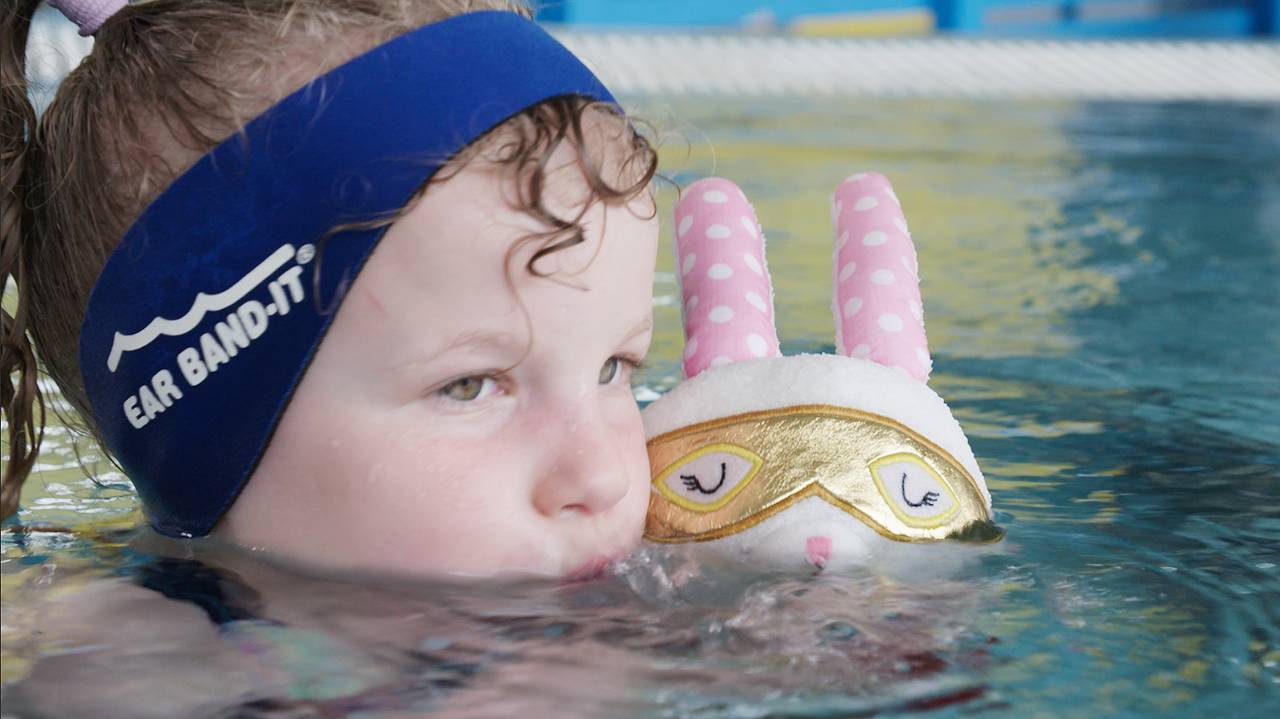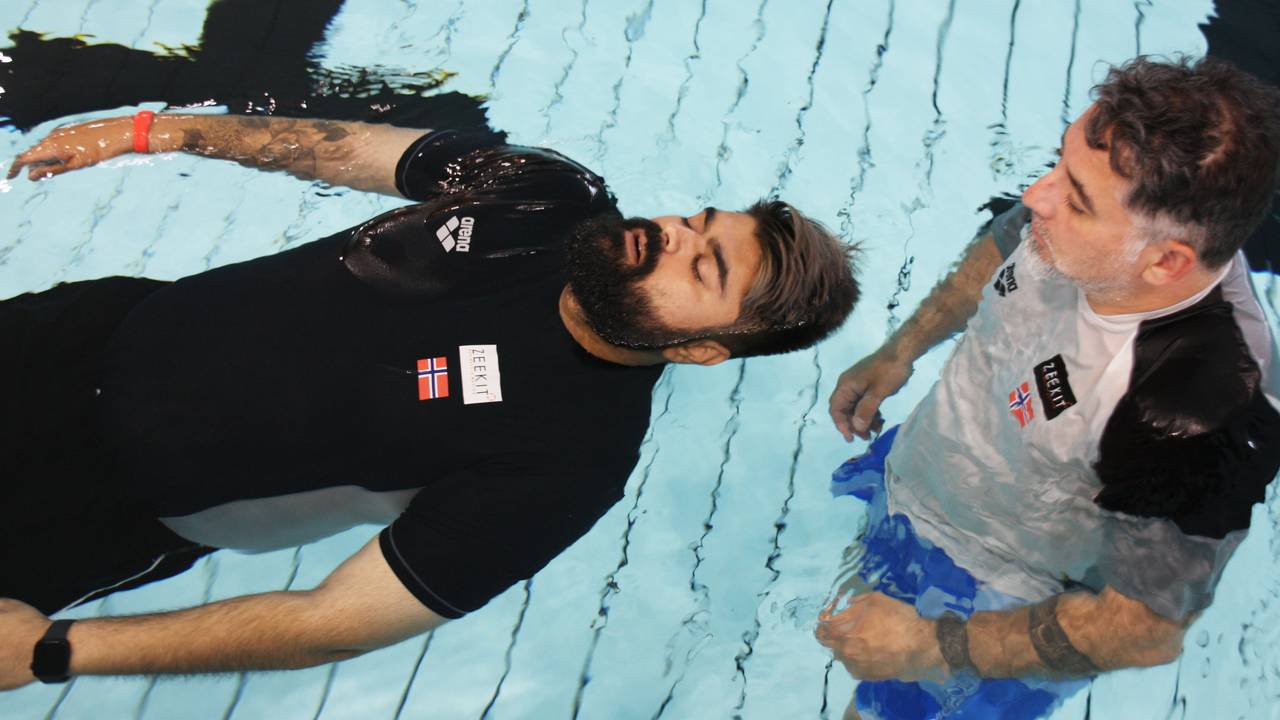It’s sunny and the bathing season is here in full swing. But only 41 percent of the country’s ten-year-olds can swim 200 meters or more, one shows recent survey.
With “All of Norway Swims” This summer, NRK, together with Redningsselskap and the Norwegian Swimming Association, will focus on safe water enjoyment for all.
That is why we have found them compulsory proficiency tests for all fourth graders in Norway.
By following the steps below, you can help your child first become safe in the water and eventually learn to swim.
All tips are taken from svømmedyktig.no. Good luck!
1. Safe in water
To be able to learn to swim, your child must first feel safe in the water. Play can be a great way to stay safe. You can sit on the edge and splash with your legs. Go out to the water’s edge for play and various movements.
Let the child “wash” his face with a little water, and eventually you can gently spray water on each other. Here you can see more exercises.
The students in Porsgrunn play with building blocks in the pool. Play and fun is a great way to stay safe in the water.
–
2. Dip under water
The next step is to keep your head under water. Let the child dip himself little by little, while the head peeks up. Put one ear at a time down, and then the back of your head.
The child can again “wash” his face, and then put his face in the water.
It can be nice to have a safe hand in the beginning. Feel free to ask what it is like to get a wet face.
Then you can practice blowing air out of your mouth. Do it first over the water, then under water.

Gabriella and the cuddly rabbit Kitti have together with NRK Super’s learning program “Bamselegen” made a special episode about water fear. Here they train to blow air in the pool.
–
3. Jump and dive
When the child feels safe in the water and thought it’s okay to have his face underneath, it’s time for diving and jumping.
It is nice to have that experience, in case the child accidentally falls into the water.
And then it’s really fun to both jump and dive!
Feel free to start by sitting on the edge and slide into the water. Then take it little by little. Let the child jump from the edge, kick from the bottom and shoot up like an arrow. You can find more exercises here.
It’s nice to practice picking up objects from the bottom.
4. Float
To be able to learn to swim, the child must first learn to float.
It is also important to be able to save your own and others’ lives. Because when you get tired of swimming, then you can relax and float before continuing to swim.
Her You will find many exercises to make your child fluent.
PS: On Saturday 5 June, we make a «floating party». NRK broadcasts directly from Frognerbadet and other places where it flows in our elongated country.

Abubakar “Abu” Hussain is also on “All of Norway swims”. He never learned to swim as a child, and here he trains to float in the pool.
Photo: Hallgeir Braastad / NRKPhoto: Hallgeir Braastad / NRK
–
5. The
Being able to glide under and in the water is important. It’s like floating, just with movement.
A good place to start is to kick yourself from the edge and float across the water. Both on the abdomen and back.
You can also make your baby lie on his back floating while holding your ankle and pulling back and forth.
Remember that the body should form as little resistance as possible in the water, the less resistance the longer you can slide. Little resistance will later make the actual swimming more effective.
6. Propulsion
If your child now both jumps, dives, glides and floats, then it is not far off.
Then you can start training on progress.
Feel free to start with dry training on land. The child can practice crawling, ie kicking the legs up and down. Sit by the pool and do the same.
Eventually, the child can hold on to the edge of the pool while practicing the kicks in the water.
Then it’s time to get your arms around. Stand on land and move your arms like windmills. When you get into the water, you may want to start while the baby is lying on its back in the water.
There are a bunch of exercises to be good at progress here.
7. Swim
Now is the time to practice swimming!
To be able to swim means, among other things, to be able to swim continuously 100 meters on the stomach and continuously 100 meters on the back.
Going from being able to swim to being able to swim is about mass training. It is wise to continue to practice diving, floating and gliding at the same time as you practice being able to swim longer and longer.
Practice makes perfect!
Here are good exercises to practice basic swimming skills.
Also keep in mind the water rules, which among other things says; Have respect for water, weather and conditions, and that children should never swim alone.
